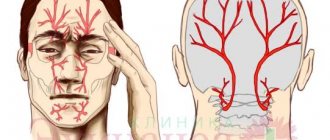School maladjustment is a disorder in the adaptation of a school-age child to the conditions of an educational institution, in which learning abilities decrease and relationships with teachers and classmates deteriorate. It most often occurs in younger schoolchildren, but can also occur in children in high school.
School maladaptation is a violation of the student’s adaptation to external requirements, which is also a disorder of the general ability to psychological adaptation due to certain pathological factors. Thus, it turns out that school maladjustment is a medical and biological problem.
In this sense, school maladjustment acts for parents, teachers and doctors as a vector of “illness/health disorder, developmental or behavioral disorder.” In this vein, the attitude towards the phenomenon of school adaptation is expressed as something unhealthy, which indicates a pathology of development and health.
A negative consequence of this attitude is the focus on mandatory testing before a child enters school or to assess the degree of development of a student in connection with his transition from one educational level to the next, when he is required to show the absence of deviations in his ability to learn according to the program offered by teachers and in school chosen by parents.
Another consequence is the strong tendency of teachers who cannot cope with a student to refer him to a psychologist or psychiatrist. Children with adaptation disorder are specially singled out, they are given labels that follow from clinical practice into everyday use - “psychopath”, “hysteric”, “schizoid” and other various examples of psychiatric terms that are absolutely unlawfully used for socio-psychological and educational purposes to cover up and justify the powerlessness, unprofessionalism and incompetence of persons who are responsible for the upbringing, education of the child and social assistance for him.
The appearance of signs of psychogenic adaptation disorder is observed in many students. Some experts estimate that approximately 15-20% of students require psychotherapeutic help. It has also been established that there is a dependence of the incidence of adaptation disorder on the age of the student. In younger schoolchildren, school maladaptation is observed in 5-8% of episodes; in adolescents, this figure is much higher and amounts to 18-20% of cases. There is also data from another study, according to which adaptation disorder in students aged 7-9 years appears in 7% of cases.
In adolescents, school maladjustment is observed in 15.6% of cases.
Most ideas about the phenomenon of school maladjustment ignore the individual and age specificities of child development.
Reasons for school maladjustment of students
There are several factors that cause school maladjustment. Below we will consider what are the reasons for school maladaptation of students, among them are:
— insufficient level of preparation of the child for school conditions; deficit of knowledge and insufficient development of psychomotor skills, as a result of which the child copes with tasks more slowly than others;
- insufficient control of behavior - it is difficult for a child to sit through an entire lesson, silently and without getting up from his seat;
- inability to adapt to the pace of the program;
- socio-psychological aspect - failure of personal contacts with the teaching staff and peers;
- low level of development of functional abilities of cognitive processes.
As reasons for school maladjustment, several other factors are identified that influence the student’s behavior at school and his lack of normal adaptation.
The most influential factor is the influence of the characteristics of the family and parents. When some parents show overly emotional reactions to their child's failures at school, they themselves, without even knowing it, cause damage to the impressionable child's psyche. As a result of such an attitude, the child begins to feel embarrassed about his ignorance regarding some topic, and accordingly he is afraid of disappointing his parents next time. In this regard, the child develops a negative reaction regarding everything related to school, this in turn leads to the formation of school maladjustment.
The second most significant factor after the influence of parents is the influence of the teachers themselves with whom the child interacts at school. It happens that teachers incorrectly build the teaching paradigm, which in turn affects the development of misunderstanding and negativity on the part of students.
School maladaptation of adolescents is manifested in too much activity, manifestation of their character and individuality through clothing and appearance. If, in response to such self-expressions of schoolchildren, teachers react too violently, then this will cause a negative response from the teenager. As an expression of protest against the education system, a teenager may encounter the phenomenon of school maladjustment.
Another influential factor in the development of school maladjustment is the influence of peers. Especially school maladaptation of adolescents is very dependent on this factor.
Teenagers are a completely special category of people, characterized by increased impressionability. Teenagers always communicate in groups, so the opinions of friends who are part of their social circle become authoritative for them. That is why, if peers protest the educational system, then there is a high probability that the child himself will also join the general protest. Although this mainly applies to more conformist individuals.
Knowing what are the causes of school maladaptation in students, it is possible to diagnose school maladaptation when primary signs occur and begin to work with it in a timely manner. For example, if at one point a student declares that he does not want to go to school, his own level of academic performance decreases, and he begins to speak negatively and very harshly about teachers, then it is worth thinking about possible maladjustment. The sooner a problem is identified, the faster it can be dealt with.
School maladaptation may not even be reflected in the academic performance and discipline of students, being expressed in subjective experiences or in the form of psychogenic disorders. For example, inadequate reactions to stress and problems that are associated with disintegration of behavior, the emergence of conflicts with other people, a sharp and sudden decline in interest in the learning process at school, negativism, increased anxiety, and the breakdown of learning skills.
Forms of school maladjustment include features of the educational activities of primary school students. Younger students most quickly master the subject side of the learning process - the skills, techniques and abilities through which new knowledge is acquired.
Mastering the motivational-need aspect of educational activity occurs in a latent manner: gradually assimilating the norms and forms of social behavior of adults. The child does not yet know how to use them as actively as adults, remaining very dependent on adults in their relationships with people.
If a younger student does not develop skills in learning activities or the methods and techniques that he uses and which are consolidated in him are not productive enough and are not designed for learning more complex material, he lags behind his classmates and begins to experience serious difficulties in his studies.
Thus, one of the signs of school maladaptation appears - a decrease in academic performance. The reasons may be individual characteristics of psychomotor and intellectual development, which, however, are not fatal. Many teachers, psychologists and psychotherapists believe that with proper organization of work with such students, taking into account individual qualities, paying attention to how children cope with tasks of varying complexity, it is possible to eliminate the backlog over the course of several months, without isolating children from the class in learning and compensation for developmental delays.
Another form of school maladaptation in young students has a strong connection with the specifics of age-related development. The replacement of the main activity (games are replaced by study), which occurs in children at the age of six, is carried out due to the fact that only understood and accepted motives for learning under established conditions become active motives.
The researchers found that among the examined students in the first to third grades there were those whose attitude to learning was of a preschool nature. This means that for them, the educational activity was not so much in the foreground as the environment at school and all the external attributes that the children used in the game. The reason for the occurrence of this form of school maladjustment lies in the inattention of parents to their children. External signs of immaturity of educational motivation manifest themselves as a student’s irresponsible attitude towards schoolwork, expressed through indiscipline, despite the high degree of formation of cognitive abilities.
The next form of school maladjustment is the inability to self-control, voluntary control of behavior and attention. The inability to adapt to school conditions and manage behavior according to accepted norms may be the result of improper upbringing, which has a rather unfavorable effect and contributes to the exacerbation of certain psychological characteristics, for example, increased excitability, difficulties with concentrating attention, emotional lability and others.
The main characteristic of the style of family relationships towards these children is the complete absence of external frameworks and norms, which should become means of self-government for the child, or the presence of means of control only externally.
In the first case, this is characteristic of those families in which the child is absolutely left to his own devices and develops in conditions of complete neglect, or families with a “cult of the child”; this means that the child is allowed absolutely everything he wants, and his freedom is not limited.
The fourth form of school maladjustment among younger schoolchildren is the inability to adapt to the rhythm of life at school.
Most often it occurs in children with a weakened body and low immunity, children with delayed physical development, a weak nervous system, problems with analyzers and other diseases. The reason for this form of school maladaptation is improper family upbringing or ignoring the individual characteristics of children.
The above forms of school maladaptation are closely related to social factors of their development, the emergence of new leading activities and requirements. Thus, psychogenic school maladjustment is inextricably linked with the nature and characteristics of the attitude of significant adults (parents and teachers) towards the child. This attitude can be expressed through communication style. In fact, the style of communication of significant adults with primary schoolchildren can become an obstacle in educational activities or lead to the fact that real or imagined difficulties and problems associated with studies will be perceived by the child as incorrigible, generated by his shortcomings and insoluble.
If negative experiences are not compensated, if there are no significant people who sincerely wish well and can find an approach to the child in order to increase his self-esteem, then he will develop psychogenic reactions to any school problems, which, when they arise again, will develop into a syndrome called psychogenic disadaptation.
Afterword
If the child is happy with school and his whole life, then there will be no problems. This means that all work should be aimed at developing a positive attitude of the child towards life, himself, the environment, school and all participants in the educational process. Any activity that is significant to the child’s personality and gives him positive emotions, including communication as a separate activity, will help with this.
Read more about successful school adaptation, its signs and the role of parents in this, in the article “Psychological features of a child’s adaptation to school. Types and levels of adaptation." About the signs and factors of maladaptation - in the article “School maladjustment: what is it, causes and signs.”
Types of school maladjustment
Before describing the types of school maladjustment, it is necessary to highlight its criteria:
- failure to perform academically in programs that meet the age and abilities of the student, along with such signs as repeating a year, chronic underachievement, lack of general educational knowledge and lack of necessary skills;
— a disorder of emotional personal attitude towards the learning process, towards teachers and towards life opportunities related to studying;
- episodic behavior violations that cannot be corrected (anti-disciplinary behavior with demonstrative opposition to other students, neglect of the rules and obligations of life at school, manifestations of vandalism);
— pathogenic disadaptation, which is a consequence of disruption of the nervous system, sensory analyzers, brain diseases and manifestations of various fears;
- psychosocial maladaptation, which acts as a child’s gender and age individual characteristics, which determine his non-standard nature and require a special approach in a school setting;
- social maladaptation (undermining order, moral and legal norms, antisocial behavior, deformation of internal regulation, as well as social attitudes).
There are five main types of manifestation of school maladjustment.
The first type is cognitive school maladaptation, which expresses the child’s failure to learn programs that correspond to the student’s abilities.
The second type of school maladaptation is emotional-evaluative, which is associated with constant violations of the emotional-personal attitude both to the learning process in general and to individual subjects. Includes anxiety and worries regarding problems arising at school.
The third type of school maladaptation is behavioral, it consists of a repetition of behavioral violations in the school environment and learning (aggression, reluctance to make contact and passive-refusal reactions).
The fourth type of school maladjustment is somatic; it is associated with deviations in the physical development and health of the student.
The fifth type of school maladjustment is communicative, it expresses difficulties in determining contacts both with adults and with peers.










